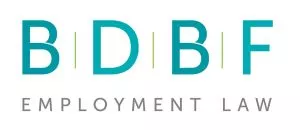Gender balance in boardrooms and at leadership level in FTSE 100 companies has been a focus of the government over the last couple of years and there have been a number of reviews and reports into female representation in senior roles in the FTSE 100 and more generally.
FTSE 100 Leadership
In July 2016 the government appointed Sir Philip Hampton (Chair of GlaxoSmithKline) and Dame Helen Alexander (Chair of UBM) to conduct an independent review to consider ways to improve the representation of women at leadership level in FTSE 100 companies.
On a positive note, the review has shown that the 25% target set by the Davies review in 2011 was exceeded (with women accounting for 26.1% of board-level roles last year).
However, the review indicated that there are still 12 FTSE 100 companies (and more still in the FTSE 350) which have no women on their executive committees. The review therefore recommended:
- a voluntary target of 33% representation of women for FTSE 100 executive committees by 2020; and
- that the financial Reporting Council should amend the UK Corporate Governance Code to oblige FTSE 350 companies to disclose the number of women on their executive committees and direct reports to create more transparency on women in senior positions.
Women in Financial Services
In June this year, New Financial, a social enterprise think tank, released a report on 'Women in UK Financial Services.' This sought to examine the context of the Gadhia report and HM Treasury's Women in Finance Charter. It comprised of research into 200 companies and institutions across 12 different sectors including banking groups, investment banks, building societies and asset managers.
Some interesting statistics arose, both positive and not-so-positive. Of the samples obtained:
- nearly one quarter (23%) of board directors are women;
- the UK is in the middle of its peers in terms of female representation on boards (although it remains further behind for representation on executive committees);
- there are a higher proportion of females on executive committees for companies with headquarters based outside of London (18% as opposed to 13% within London); and
- there are a higher proportion of listed companies (26%) with women on the board, which is nearly twice that for privately held companies.
However:
- only 1 in 7 women are represented on executive committees;
- there is still a lack of female executive directors – the proportion of female non-executive directors (27%) is nearly four times the proportion of female executive board directors (7%);
- female executive committee members tend to be those who have support roles rather than C-suite (senior executive roles) or revenue generating functions; and
- one quarter of companies still have no women on their executive committees and one in six companies have women on their board.
The report therefore indicated that whilst positive steps are being taken within the industry, there is still a long way to go to achieve gender balance in the financial sector. The Government's focus so far has been on female board representation. This is perhaps one reason why there has been limited improvement on executive committees, which has remained stagnant at around the 14% mark. As such, this is likely to be next on the agenda for the Government.
It is also clear that more needs to be done to increase the number of women in the executive pipeline. Of the women holding executive committee places, the vast majority hold support roles, such as Head of HR and Head of Communications. In fact, 61% of Heads of HR and 52% of Heads of Communications were women, compared with just 9% of Heads of Division and 10% of other senior executive roles. To compound this, these types of supporting roles are not often represented at all on executive committees.
One way to improve this situation would be to increase the number of supporting function roles on executive committees. However, this would be a quick fix to the deeper issue of why there is a lack of women performing frontline senior roles.
What Next?
The Hampton-Alexander review and the New Financial report do indicate an improvement in gender balance; the proportion of women on FTSE 100 boards has increased to 26% from 12.5% in 2011.
To date, however, these initiatives have been undertaken on a voluntary basis by organisations. The UK Government has not yet introduced quotas for female representation on boards or executive committees, unlike its French and German counterparts. Unless the underlying issues as to why a proportionate number of women are not holding frontline roles is addressed, compulsory measures may need to be introduced in the future. To prevent this, companies need to show they are serious about nurturing female talent in leadership roles.
The ultimate aim of these reports is to create and develop a more sustainable business model for the industry. The UK has historically been a standard-bearer for business, especially in the financial services market. There is therefore no reason why taking a lead on this issue would be a competitive disadvantage, not least as steps are being taken to increase gender diversity in most other countries. Hopefully the statistics in these reports are the start of a growing trend to improving gender imbalance at senior level.
The content of this article is intended to provide a general guide to the subject matter. Specialist advice should be sought about your specific circumstances.

